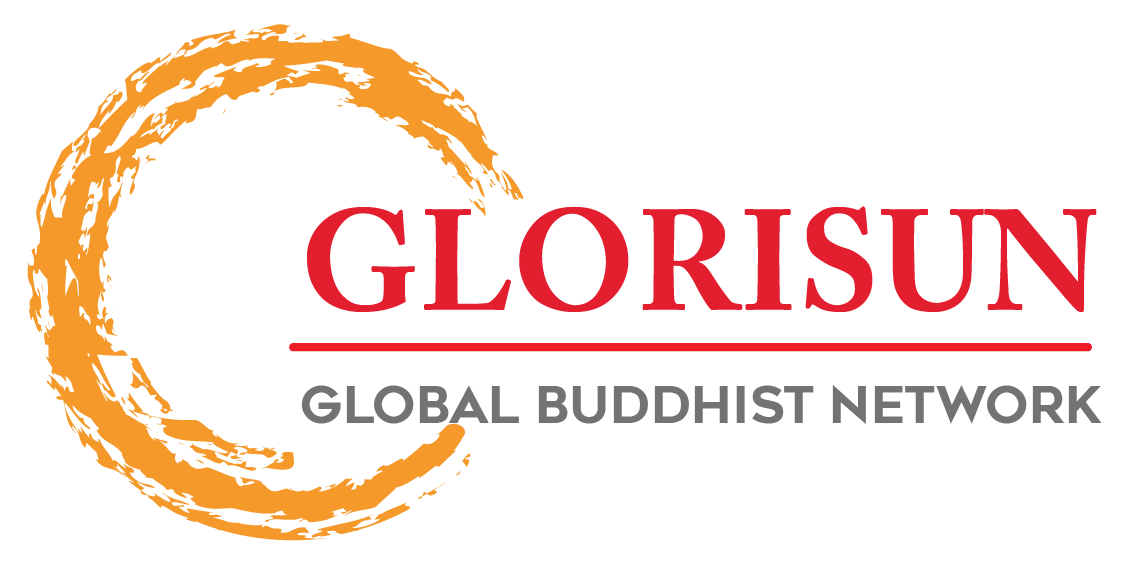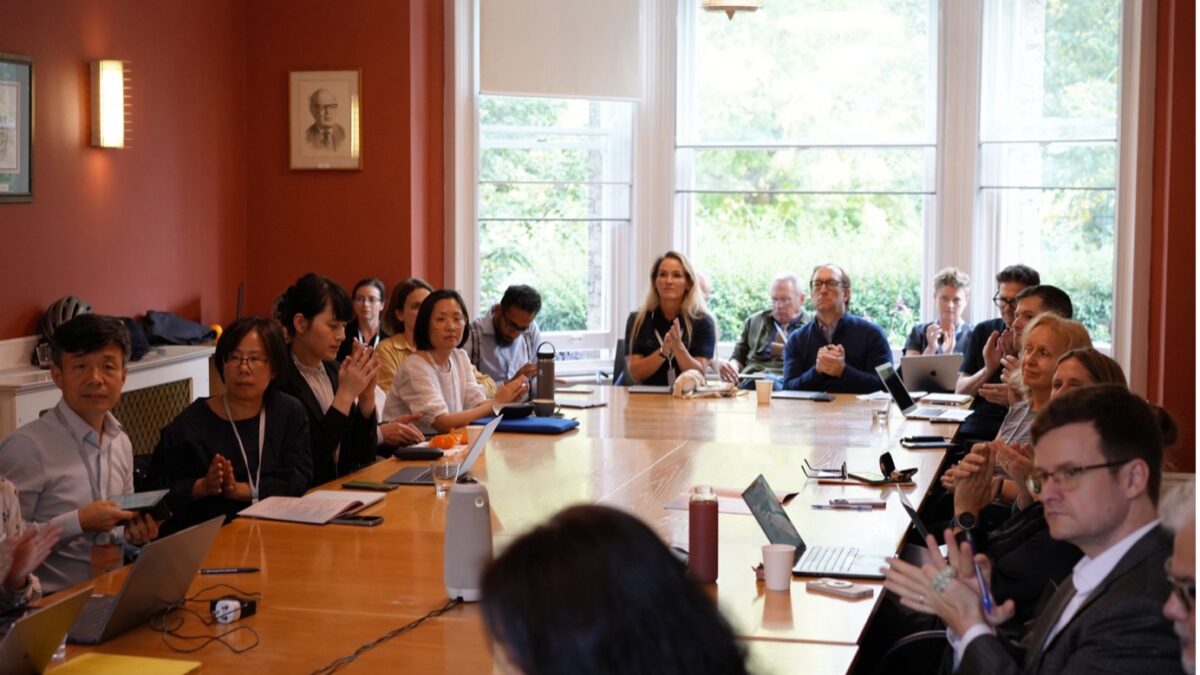Return to main conference page.
Return to main reports page.
Posted on
From August 31 to September 1, 2024, the second Glorisun Annual Forum, titled ‘Beyond Civilizational Clash: The Coalescence of Human Civilizations,’ was held at Magdalene College, University of Cambridge. The forum focused on two main themes: the first, ‘When the Himalayas Encounter the Alps: The Past, Present and Future of Asia-Europe Buddhist and Other Religious Exchanges,’ explored the historical and contemporary interactions between Asia and Europe in the context of Buddhist and religious exchanges, assessing their impact on both regions and projecting future developments. The second theme, ‘The Healer-King Curing the Three Poisons, while the Master Navigator Overcomes the Nine Misfortunes:An International Conference on Buddhism and Medicine from an Interdisciplinary and Global Historical Perspective,’ examined the relationship between Buddhism and medical practices from a global and interdisciplinary standpoint, including Buddhism’s contribution to ancient medicine and its relevance in modern global context.
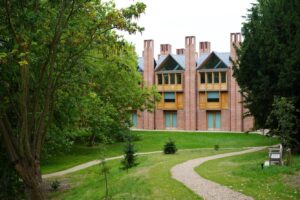
Magdalene College, Cambridge University
Opening Ceremony and Keynote Speeches: The Cross-Cultural Influence of Buddhism
The forum began on the afternoon of August 30 with a keynote session chaired by Noga Ganany (University of Cambridge). The first keynote address was delivered by T. H. Barrett (SOAS, University of London), who examined the influence of the Daode jing in late 19th and early 20th century Britain, emphasising the cross-cultural connections between Daoist thought and Zen in the Anglophone world. Barrett observed that translations of the Daode jing were significantly influenced by Theosophist ideas, which stressed the fusion of Eastern and Western philosophies. He also highlighted how Daoist texts frequently appeared in works on Japanese and pan-Asian thought, shaping discussions of both Zen and Daoism in the mid-20th century.
The second speaker, Eugene Wang (Harvard University) explored the thematic and structural similarities between mandalas in medieval China and the narrative techniques in the works of modern European writer J. G. Ballard. He compared the symbolic imagery and architectural complexity of mandalas with Ballard’s narrative framework, illustrating how both serve as tools for understanding and navigating complex psychological and social landscapes. Wang noted that although Ballard had limited knowledge of Asian Buddhist art, the mandalas depicted in his work bear remarkable similarities to those from medieval China. This presentation further examined the symbolic significance of mandalas as a deep connection between Eastern and Western cultures. It bridged cultural and temporal gaps, offering an in-depth analysis of how ancient symbols and modern narratives together reveal the universality of human experience. The keynote speeches concluded with a welcome banquet, offering participants a chance to continue their discussions in a relaxed and convivial setting.
The following day, the opening ceremony featured a series of impressive speeches, providing participants with profound academic exchanges and forward-looking insights. First, Laura Moretti, Head of East Asian Studies and Co-Director of the Faculty of Asian and Middle Eastern Studies at the University of Cambridge, delivered a warm welcome speech. This was followed by remarks from Dr. Charles Yeung of the Glorisun Charity Foundation, read on his behalf by Jinhua Chen (University of British Columbia). Next, Mikky Ho, Director of the China Britain Trust for the Promotion of Buddhist Studies, took the stage, followed by a speech from Zhan Ru (Peking University), also read by Ho. Georgios T. Halkias (University of Hong Kong) then shared his remarks, and the session concluded with a talk by Stephen Teiser (Princeton University). Robert Sharf (University of California, Berkeley) delivered his address via video. The ceremony also featured a video review of the 2023 inaugural Glorisun Annual Forum, allowing participants to revisit the highlights of last year’s event held at the University of Hong Kong.
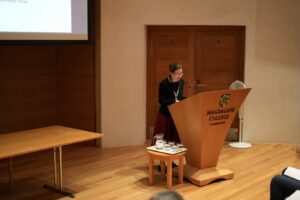
Noga Ganany giving speech at the opening day of the forum
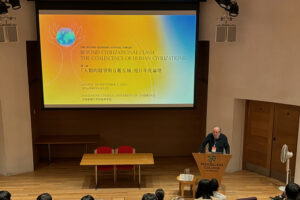
T. H. Barrett delivering the keynote address. Photo by Yizhuo Li.
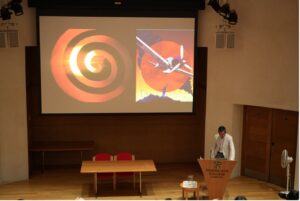
Eugene Wang delivering the keynote address
Buddhism, Other Religions, and the Diversity of the Medicine Buddha in Medical Practices
The first day of the conference featured four engaging sessions. The opening session, Medicine That Merged Buddhism and Other Religions, was chaired by Lu Lu (Zhejiang University), with Chen Ming (Peking University) as the discussant. This session focused on the intersection of medical practices across Buddhism, Daoism, and Christianity. Li Wei (Henan University) began by providing an in-depth exploration of the Yangzhi jingshui 楊枝淨水 (willow twigs and purified water) and its roles in healing, purification, and offerings in various Buddhist texts and rituals, alongside the widespread dissemination of Guanyin imagery in literature and art. Gao Xi (Fudan University) took a historical approach, examining the interactions and influences between Christian and Buddhist medical charity activities in late Qing China. Using the case studies of Huang Chunpu (黄春甫) and Huang Hanzhi (黄涵之), Gao compared Buddhist medical charity efforts with Christian charitable models, emphasising their ideological differences and social significance. Liu Qing (Hirosaki University) presented on the health practices of Zen monk Hakuin Ekaku (1685–1768) and his contributions to the intersections of Buddhism and Daoism, particularly in the areas of physical cultivation and healing. H.S. Sum Cheuk Shing (University of Chicago), participating online, discussed the material culture and medical applications in Buddhist practices during the Tang-Song periods, focusing on Dunhuang manuscript materials and esoteric Chinese Buddhist canonical texts related to anti-aging and life-extension, offering new insights into the Buddhist medical practices of the era. Additionally, Zhang Yuanyuan (Ningxia University), also presenting online, examined the formation and historical evolution of ‘sanshi’ knowledge, highlighting the mutual influence and integration of traditional Chinese medicine, Buddhism, and Daoism in concepts of illness and exorcism.
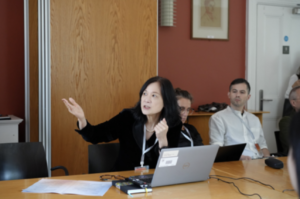
Gao Xi giving her presentation on the Medicine That Merged Buddhism and Other Religions panel
In the panel session on Medicine Master and Medical Tea, chaired by Meir Shahar (Tel Aviv University) with Pierce Salguero (Penn State University’s Abington College) as the discussant, scholars delved into the diverse roles and medical practices associated with the Medicine Master in medieval China and early modern Tibet. Stephen Teiser (Princeton University) focused on the functions of the Medicine Master 藥師 and its attendant deities in medieval Chinese Buddhist practices. Through an analysis of Dunhuang manuscripts, Teiser revealed how these deities were increasingly invoked in historical sources, highlighting the richness and complexity of Buddhist rituals. Following this, Briana Brightly (Harvard University) examined how the Tibetan Buddhist monk Deumar Geshé Tendzin Püntsok (b. 1672) applied his extensive knowledge of materia medica to the visual design of Medicine Buddha’s Pure Land imagery, blending medical and artistic representations. His visual program transformed the Buddhist icon of Tanaduk into a repository of natural world knowledge, offering a hybrid form combining Pure Land painting with illustrated materia medica. Irene Lok (University of Cambridge), through an analysis of the Medicine Buddha Sūtra mural from the Tang Dynasty in Dunhuang’s Cave 220, explored the unique position of the Medicine Buddha in Tang society and its connection to the Zhai family, the patron of the cave and the medical practices within the Medicine Buddha Sūtra and its role in addressing impermanence, illness, and suffering. Enbo Hu (LMU München) highlighted the close relationship between the Tibetan liturgy of building stūpas and the liturgical practices of Bhaiṣajyaguru (sMan bla’i chog sgrigs), emphasising their structural and content-based intertextuality. These materials trace both the stūpa-building and Bhaiṣajyaguru liturgies back to Śāntarakṣita, later adopted by prominent figures like the 4th Panchen Lama and the 5th Dalai Lama, underscoring their significance in Tibetan Buddhist liturgy. Yin Zhao (Peking University) conducted research on the integration of tea and medicine in Song Dynasty Buddhism, showcasing the unique Buddhist tea culture of the period, which featured not only elaborate tea ceremonies, grand tea parties, and refined tea banquets but also the custom of taking medicinal pills (Chayao 茶藥), reflecting a blend of Chinese and Indian medicinal practices.
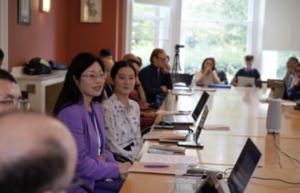
Panel discussions
In the session on ‘Medicocracy’ and Medical Crazies, chaired by Eviatar Shulman (Hebrew University of Jerusalem) with Stephen Teiser (Princeton University) as the discussant, three scholars explored the connections between Buddhism and healing from various historical perspectives. Junqing Wu (University of Liverpool) examined local healing practices in the Southern Song Dynasty, analysing the use of Buddhist symbols in treatment through Hong Mai’s 夷堅志 Yijian zhi. Wu categorizes Buddhist healing stories into four groups: healing through recitation of sutras, intervention by Buddhas or Bodhisattvas, healing monks performing rituals, and cases where unresolved karmic debts prevent healing, highlighting the significant role of karmic retribution in the Song dynasty’s understanding of illness and recovery, forming a unique healing cultural landscape. Yunyao Zhai (Harvard University) discussed the worship of the Medicine Buddha during the Yuan Dynasty (1279–1368), emphasising its significant role in shaping the religious inclinations of Mongol nobility and royalty, and its critical influence in both political and religious spheres. Lastly, Alexander Sogo (Columbia University), participating online, explored how Japanese aristocrats in the Ritsuryō state incorporated ideals of health and charity to establish Japan’s first welfare institutions. Sogo offered insights into how bureaucratic governance and religious practices jointly shaped national ideology and social welfare, highlighting how Buddhist medicine became a central part of state ideology, believed to generate karmic merit capable of healing the realm despite limited medical infrastructure.
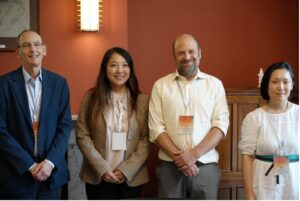
Presenters, discussant, and the chair of the ‘Medicocracy’ and Medical Crazies panel (Stephen Teiser, Yunyao Zhai, Eviatar Shulman, and Junqing)
Medium, Medical Narratives, and Monastic Texts
The following day, the session on Medicine, Medium, and Miracleschaired by Gao Xi (Fudan University), with Yunyao Zhai (Harvard University) as the discussant. Federico Divino (University of Antwerp) began by exploring the possibility that the role of the physician in India was shaped by Buddhist thoughts, with Buddhist ascetics sharing a common archetype of a healer. His study highlighted how early Buddhist texts, rather than Vedic literature, first introduced core medical concepts, marking a shift from magical-religious healing to empirical medicine, thus contributing to the development of the physician as a distinct professional figure. Gao Junling (University of Hong Kong) and his team explored how Buddhist principles can address modern psychological and emotional challenges through interdisciplinary perspectives. Their research underscored the effectiveness of mindfulness meditation and the cultivation of compassion in reducing suffering and promoting well-being. They emphasised the importance of collaboration between fields such as neuroscience, psychology, and Buddhist studies to fully realize the potential of Buddhist wisdom in the contemporary contexts. Next, William A. McGrath (New York University) explored the ethical foundations of Tibetan Buddhist medicine, focusing on the development of medical ethics for bodhisattva physicians. Through an analysis of early Tibetan texts guiding physicians, McGrath noted that during the Mongol-Sakya period (1250–1350), the physician-patient relationship was redefined as intimate, similar to that of a parent and child, with a focus on compassion and enlightenment. This redefined ethical system had a profound impact on bodhisattva physicians in Tibet and beyond. Eviatar Shulman (Hebrew University of Jerusalem) then presented the evolution of a specific Buddhist medical concept in Indian Buddhism, focusing on the idea that healing can be achieved through ‘letting go.’ Shulman used Vimalakīrti’s argument—that illness is an illusion tied to dualistic perception—as a key example. This concept, with roots in early Buddhist texts where healing occurs through mental release, highlighted the interdependence of mind and matter, reflecting a fundamental Buddhist insight into the nature of healing.
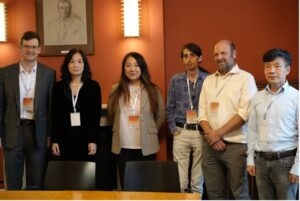
Presenters, discussant, and the chair of the Medicine, Medium and Miraclespanel (William A. McGrath, Gao Xi, Yunyao Zhai, Federico Divino, Eviatar Shulman, and Gao Junling)
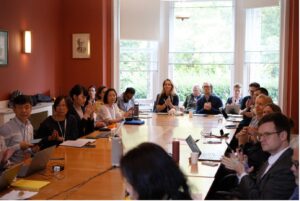
Panel discussions
In the Application of Buddhist Medicine session, chaired by Andrew Skilton (University of Oxford) with Junqing Wu as the discussant, several scholars engaged in a deep and insightful discussion on Buddhism’s significant influence on medical narratives. Yi Dan (University of Tokyo) began by focusing on the medical condition known as Face-Like Tumor (Jinmensō 人面瘡), a peculiar affliction documented in both traditional East Asian medical texts and Buddhist scriptures. By tracing the lineage of Jinmensō stories and analysing Buddhist interpretations—particularly those from the Song dynasty onwards—Yi Dan demonstrated how these tumours were often viewed as symbols of karma, illustrating the profound impact of Buddhist thought on medical practices, literature, and cultural narratives in both China and Japan. Next, Benedetta Lomi (University of Bristol) shifted the discussion to medieval Japan, exploring how Buddhist ritual specialists addressed health concerns that arose from premonitory dreams. She focused on rituals performed in response to these visions, particularly nightmares. By analysing historical records, Lomi revealed the dual nature of dreams in medieval Japan, where they could both predict illnesses and suggest cures, while also being seen as debilitating afflictions that required treatment from both physicians and ritualists. Khan Mujeeb (University of Utah) continued by examining the intersection of Buddhism and medicine through the lens of the Heian period medical text Ishinpō 《醫心方》. He emphasised how Buddhist concepts shaped Japanese medical practices and explored how this relationship evolved over time, ultimately influencing local medical formulations. Finally, Li Tiehua (Shanghai University of Traditional Chinese Medicine) provided an in-depth study of medical and health columns in Buddhist periodicals during the Republic of China era. These columns, covering topics primarily in traditional Chinese medicine, with contributions from both monks and lay practitioners, offered a valuable platform for knowledge exchange. Li also highlighted how these publications preserved records of interactions between Buddhism and modern medicine, reflecting the broader social engagement of Buddhism during this period.
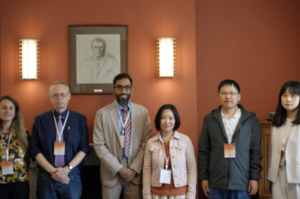
Presenters, discussant, and the chair of the Application of Buddhist Medicine panel (Benedetta Lomi, Andrew Skilton, Khan Mujeeb, Junqing Wu, Li Tiehua, and Yi Dan)
In the Meditation and Medicine panel, chaired by Benedetta Lomi (University of Bristol) with Alessandro Poletto (Washington University in St. Louis) as the discussant, scholars delved into the cross-cultural transmission of Buddhist medical concepts, the role of physical preparation before meditation, and the intersection between Buddhist traditions and psychedelic substances. Lu Lu (Zhejiang University) explored the pioneering efforts of An Shigao and Dharmarakṣa in translating Indian medical concepts into Chinese. While An Shigao localized Indian medical and divination terms to align with existing Chinese concepts, Dharmarakṣa sought a balance between fidelity to the original texts and incorporating An Shigao’s terminological adaptations, demonstrating divergent strategies in their translations of the Yogācārabhūmi (T.607) and Xiuxing Daodi Jing (T.606). Mei Ching Hsuan (Dharma Drum Institute of Liberal Arts) emphasised the importance of physical preparation before meditation and, through a comparative analysis of the 10th-century Tibetan meditation text The Lamp for the Eye of Contemplation (bSam gtan mig sgro), she revealed a shared understanding across traditions regarding the significance of body care, highlighting its pivotal role in achieving successful meditation. Stuart Sarbacker (Oregon State University) examined the relationship between Indo-Tibetan Buddhist contemplative traditions and the contemporary ‘Psychedelic Renaissance,’ with a focus on its implications for medicine and spirituality. He further suggested that psychedelics, if viewed as medicine rather than intoxicants, could be defended in Buddhist ethics as therapeutic tools, though traditionalists may still consider them a violation of precepts. Meanwhile, historical Indic texts recognize certain herbs as facilitating extraordinary experiences, offering a broader context for the ongoing debate.
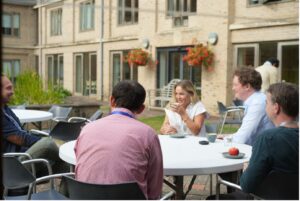
Conference participants enjoy a casual lunch break during the forum at Magdalene College
After lunch, the conference concluded with the final session, Precepts and Prescriptions: Vinaya Buddhism and Medicine, chaired by Mei Ching Hsuan (Dharma Drum Institute of Liberal Arts) and with Li Wei (Henan University) as the discussant. This session saw scholars deeply exploring the intersection between Vinaya texts and medical practices. Andrew Skilton (University of Oxford) began by examining a Pali Vinaya rule prohibiting surgery on the anus (Vin.i.215–216), clarifying key terminology like uppaṇḍeti, meaning ‘to mock someone by questioning their sexuality,’ in order to address situations where male identity is perceived to be threatened. Through analyzing a frame story in which the Buddha walks away from an encounter with a doctor, Skilton uncovers an underlying anxiety in the Pali Vinaya regarding any implications of the Buddha having a non-heteronormative sexual identity. Amy Paris Langenberg (Eckerd College) followed with an examination of the Bhikṣuṇī-Vinaya as an imperfect yet insightful archive of monastic women’s lives. She acknowledged that while Buddhism often negatively associates femaleness with reproductive functions, this is not the only perspective within the tradition. Langenberg’s presentation focused on texts from the Mahāsāṅghika-lokottaravādin school’s Bhikṣuṇī-Vinaya concerning female reproductive health, anatomy, and self-care, addressing topics such as menstrual practices, hygiene, abortion, pregnancy, nursing, sexual health, and treatments for reproductive diseases within the monastic discipline, demonstrating the complexity of Buddhist approaches to women’s health. Alessandro Poletto (Washington University in St. Louis) concluded the session by exploring the role of Buddhist monks as transmitters of healing practices from the continent to medieval Japan. Focusing on the figure of Butsugon-bō Shōshin (仏厳房聖心, active 1141–1194) from medieval Japan and his therapeutic methods. Poletto examined his therapeutic methods, which integrated Vinaya discipline, nenbutsu 念仏 (reciting the Buddha’s name), moxibustion, and other traditional healing tools into the medical and spiritual care of the Japanese court. Poletto emphasised how these practices contributed to the healing processes in medieval Japanese Buddhism, reflect an evolving intersection between Buddhism and medicine during the 12th century.
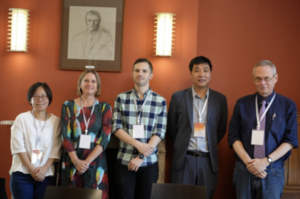
Presenters, discussant, and the chair of the Precepts and Prescriptions:Vinaya Buddhism and Medicine panel (Mei Ching Hsuan, Amy Paris Langenberg, Alessandro Poletto, Li Wei, and Andrew Skilton)
Concluding Remarks
The Second Glorisun Annual Forum on ‘Beyond Civilizational Clash: The Coalescence of Human Civilizations’ brought together scholars from various fields to explore the profound intersections between Buddhism and medical practices across cultures and time periods. Through discussions on Buddhist contributions to ancient and modern medicine, religious healing practices, and the ethical foundations of care, the ‘Buddhism and Medicine from an Interdisciplinary and Global Historical Perspective’ conference shed light on how Buddhism has shaped medical narratives and therapeutic approaches. The range of topics—covering everything from the roles of monastic women and bodhisattva physicians to the influence of Buddhist ethics on psychedelic medicine—demonstrated the ongoing relevance of Buddhist thought in addressing both historical and contemporary health challenges. This interdisciplinary exchange highlighted the enduring impact of Buddhism on global medical traditions, offering valuable insights for scholars and practitioners alike. These in-depth discussions not only expanded our understanding of Buddhism’s influence on the field of medicine but also deepened our comprehension of medical history. The impact of these exchanges goes beyond academia, resonating deeply across cultural and social spheres, offering new perspectives and insights into the complex relationship between medicine and religion.
Text and photos by Gennie Zhang, University of Cambridge
